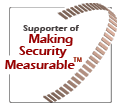Executive Summary
| Informations | |||
|---|---|---|---|
| Name | CVE-2025-21837 | First vendor Publication | 2025-03-07 |
| Vendor | Cve | Last vendor Modification | 2025-03-07 |
Security-Database Scoring CVSS v3
| Cvss vector : N/A | |||
|---|---|---|---|
| Overall CVSS Score | NA | ||
| Base Score | NA | Environmental Score | NA |
| impact SubScore | NA | Temporal Score | NA |
| Exploitabality Sub Score | NA | ||
| Calculate full CVSS 3.0 Vectors scores | |||
Security-Database Scoring CVSS v2
| Cvss vector : | |||
|---|---|---|---|
| Cvss Base Score | N/A | Attack Range | N/A |
| Cvss Impact Score | N/A | Attack Complexity | N/A |
| Cvss Expoit Score | N/A | Authentication | N/A |
| Calculate full CVSS 2.0 Vectors scores | |||
Detail
| In the Linux kernel, the following vulnerability has been resolved: io_uring/uring_cmd: unconditionally copy SQEs at prep time This isn't generally necessary, but conditions have been observed where SQE data is accessed from the original SQE after prep has been done and outside of the initial issue. Opcode prep handlers must ensure that any SQE related data is stable beyond the prep phase, but uring_cmd is a bit special in how it handles the SQE which makes it susceptible to reading stale data. If the application has reused the SQE before the original completes, then that can lead to data corruption. Down the line we can relax this again once uring_cmd has been sanitized a bit, and avoid unnecessarily copying the SQE. |
Original Source
| Url : http://cve.mitre.org/cgi-bin/cvename.cgi?name=CVE-2025-21837 |
Sources (Detail)
| Source | Url |
|---|
Alert History
| Date | Informations |
|---|---|
| 2025-03-07 13:20:32 |
|





